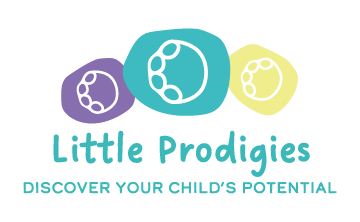Why is it important to read books at a young age?
Reading to your baby or toddler from an early age is more than just a bonding activity; it is a cornerstone of their development. Books play a vital role in young children's cognitive, social, and emotional growth. Research consistently highlights the numerous benefits of early exposure to literature, underscoring the importance of incorporating books into daily routines from infancy.
⭐️Why Books Matter in Early Childhood⭐️
Language Development: Books introduce babies and toddlers to the rhythm and melody of language. Listening to stories helps them understand sounds, words, and the structure of language, laying a foundation for later reading and writing skills.
Cognitive Skills: Early reading experiences stimulate brain development. Books encourage children to think, ask questions, and understand complex concepts, even before they can speak in full sentences.
Emotional Bonding: Reading to a child creates a sense of intimacy and emotional connection. The shared activity fosters a safe and loving environment, which is essential for a child's sense of security and well-being.
Social Understanding: Stories often contain characters and scenarios that help children understand different emotions and social situations. This exposure is crucial for developing empathy and social skills.
Routine and Comfort: Incorporating reading into a daily routine can provide comfort and stability, which is beneficial during periods of change or stress.
⭐️Top 5 Books to Read Before the Age of 2⭐️
Choosing the right books for young children is crucial to spark their interest and imagination. Here are five highly recommended books, backed by research and loved by parents and educators alike.
"Goodnight Moon" by Margaret Wise Brown
Why It’s Great: This classic bedtime story, with its gentle, rhythmic text and soothing illustrations, provides a calming end to the day. The repetition of phrases helps build language skills and provides a comforting routine.
"The Very Hungry Caterpillar" by Eric Carle
Why It’s Great: The colourful and engaging illustrations captivate young minds, while the simple, repetitive text and the concept of transformation introduce basic counting and the days of the week. It’s a delightful way to teach children about growth and change.
"Dear Zoo" by Rod Campbell
Why It’s Great: The interactive flaps and repetitive text make this book a hit with toddlers. It’s excellent for vocabulary building and helps develop fine motor skills as children lift the flaps to discover the animals.
"Peek-a-Who?" by Nina Laden
Why It’s Great: This playful book combines rhymes, bright pictures, and die-cut pages to keep babies and toddlers engaged. The simple text and peek-a-boo format are perfect for interactive reading and developing early literacy skills.
"Where's Spot?" by Eric Hill
Why It’s Great: Another lift-the-flap book, "Where’s Spot?" encourages curiosity and interaction. The search for Spot teaches spatial concepts and prepositions, all while entertaining with its charming illustrations and storyline.
⭐️In a Few Words⭐️
Integrating books into the lives of young children is not just beneficial—it’s essential. From enhancing language and cognitive skills to fostering emotional bonds and social understanding, the advantages of early reading are profound and lasting. By choosing engaging and age-appropriate books, parents and caregivers can nurture a lifelong love of reading and learning in their children.
Incorporating these top five books into your child's early years can provide a solid foundation for their future educational success and personal development. So, cuddle up with your little one and explore the magical world of stories together—it's a journey that will benefit them for years to come.
